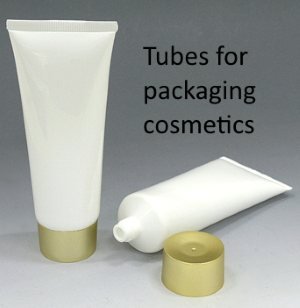November 13, 2014
Many product manufacturers use tubes for a few products not their entire range. This has led to questions about the ability of tubes to be efficient packaging solutions in many circumstances. Typically, there are a few misconceptions about tube packaging that hold back their use. However, with innovations and developments, these challenges are no longer true of tubes.
Myth 1 - Tubes are Only Suited for Thick Creams

Many manufacturers of cosmetics feel that tubes are better suited only for thick creams, whereas thinner less viscous products are better dispensed from bottles. However, it is possible to reduce the orifice of the tube to around a millimeter and use special caps or applicators with valves to ensure that even thin fluids such as toners can be packaged in tubes.
Myth 2 - Tubes are Less Prestigious than Bottles
There has been a perception among marketers that consumers perceive tubes to be less prestigious than bottles. However, this myth is debunked by the fact that most prestigious sun tan lotions are sold in tubes. Even consumers who think that bottles are more prestigious prefer tubes for their convenience.
Another way of overcoming this challenge is to use some of the new decorating processes that can provide a matte or gloss finish using silk screen printing and hot stamping technologies. Offset printing is another option which can provide a superior finish for high end products packaged in tubes.
Myth 3 - Tubes are More Expensive than Bottles
The cost comparison between tubes and bottles is difficult to make as the supplier distance, size of the tube or bottle, and similar factors will affect the costs. Small manufacturers of cosmetics often prefer bottles as they can be hand filled, whereas they need to outsource tube filling. However, those willing to invest in a filling machine will find that the footprint for the tube filling machine is smaller as a bottle filling line has multiple steps such as unscramble and capper that require more space. Today the cost of tube filling machinery has dropped a great deal in price.
Importing Tubes
Some product manufacturers import tubes from China to reduce costs. However, unless they can assure themselves of the quality of the product, the final cost can become higher if many tubes need to be discarded. While China now also provides better quality tubes, cosmetics manufacturers can keep costs low by opting for local suppliers and fillers of tubes.
There are many reasons to choose tubes for packaging cosmetics, personal care, pharmaceutical and food products. However, some manufacturers feel that tubes are less prestigious for their high end offerings, difficult to use with products of less viscosity, or are more expensive. Most of these challenges have now been addressed by the tube industry, which offers better printing technology to design eye catching packaging, dispensers with valves that can control the flow of the fluid inside, and so on.
With these improvements, product manufacturers can use tubes for packaging most of their cosmetics. In fact, when it comes to very small quantities, tubes offer a distinct advantage over bottles since they can be squeezed which enables the user to dispense more of the product making tubes more cost effective.

 USA Sales & Service
USA Sales & Service
